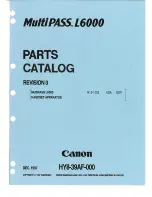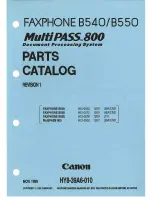Reviews:
No comments
Related manuals for smart 100s

MultiPASS L6000
Brand: Canon Pages: 39

MultiPASS 800
Brand: Canon Pages: 103

BC100
Brand: UnionSpecial Pages: 32

CP335B
Brand: SYSFORM Pages: 28

DR-7UW
Brand: NLI Pages: 36

RS04-OC
Brand: XIMEA Pages: 19

747L
Brand: Siruba Pages: 2

KISS PRO
Brand: Stern Pinball Pages: 46

WWE PRO 500-55G1-00
Brand: Stern Pinball Pages: 60

KX-TGE274S
Brand: Panasonic Pages: 2

KX-TM150ALB
Brand: Panasonic Pages: 19

KX-TGA939
Brand: Panasonic Pages: 16

KX-TM85B
Brand: Panasonic Pages: 36

KX-TM80B
Brand: Panasonic Pages: 36

KX-TM150B
Brand: Panasonic Pages: 40

KX-TGC220AL
Brand: Panasonic Pages: 44

KX-TGC460E
Brand: Panasonic Pages: 48

KX-TGH220E
Brand: Panasonic Pages: 56

















